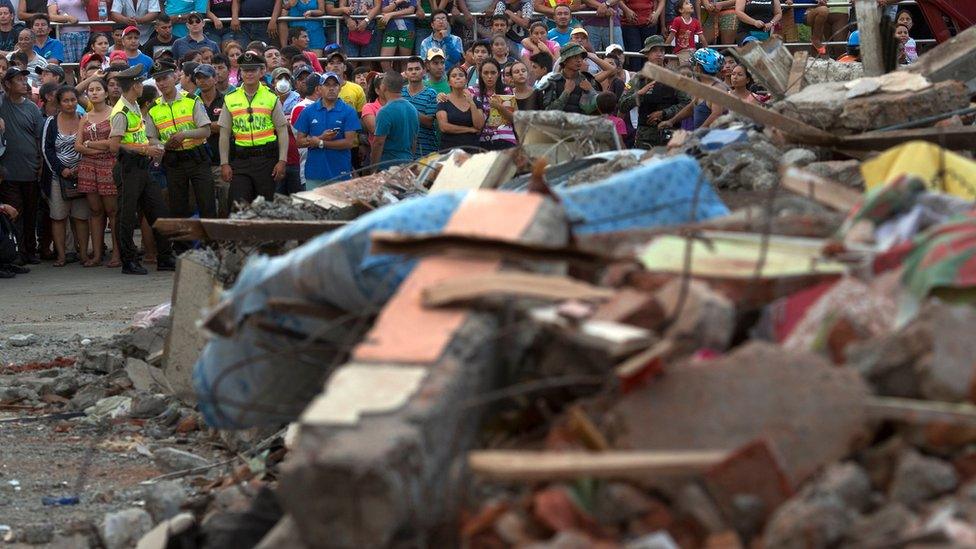Ecuador earthquake: How life near epicentre changed in under a minute
- Published
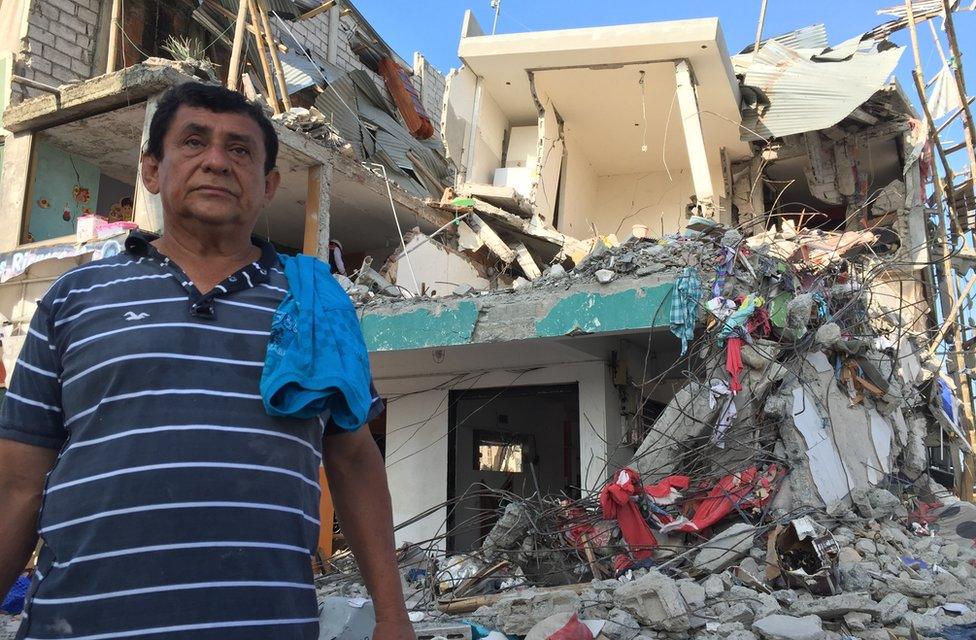
Nexar Santana Lopez lost four relatives in the earthquake
Driving into Pedernales is like entering a warzone. But this shocking devastation was wrought by nature. This quake lasted less than a minute - and hardly any house is intact.
Once-private spaces are open for everyone to see. Shower rooms with no walls. An empty pink high chair teetering on the edge of a room that is at an angle. A set of medals pinned to the wall of a family home.
As you pass the buildings, you wonder who survived and who didn't. Who were these people who lived in the buildings and where are they now?
In the centre of town, near the epicentre of Saturday's 7.8-magnitude earthquake, it's hard to see where the buildings once stood. Most are now large piles of rubble.
'They tried to come downstairs'
Right by the square, I meet Nexar Santana Lopez. He is standing outside his family home, looking, shell-shocked, at the top three floors that collapsed.
He ran a bar on the ground floor, the only level that remained upright during the tremor. He said he was sitting outside on Saturday night when the ground started to shake.
That sort of thing wasn't uncommon, so he didn't think too much of it until it got much worse.
"It was so strong, I lost my balance," he tells me. "I went to see my family and they were all huddled in a corridor, it seems they were trying to come downstairs but didn't make it."
Five people close to him died - his wife, daughter-in-law, two grandchildren and an employee.
In the aftermath of the quake, his daughter-in-law Alison was found cradling her six-week-old baby, both still alive. She pleaded with Nexar to stay but when the authorities issued a tsunami warning, the family had to run. When Nexar returned, mother and baby were dead.
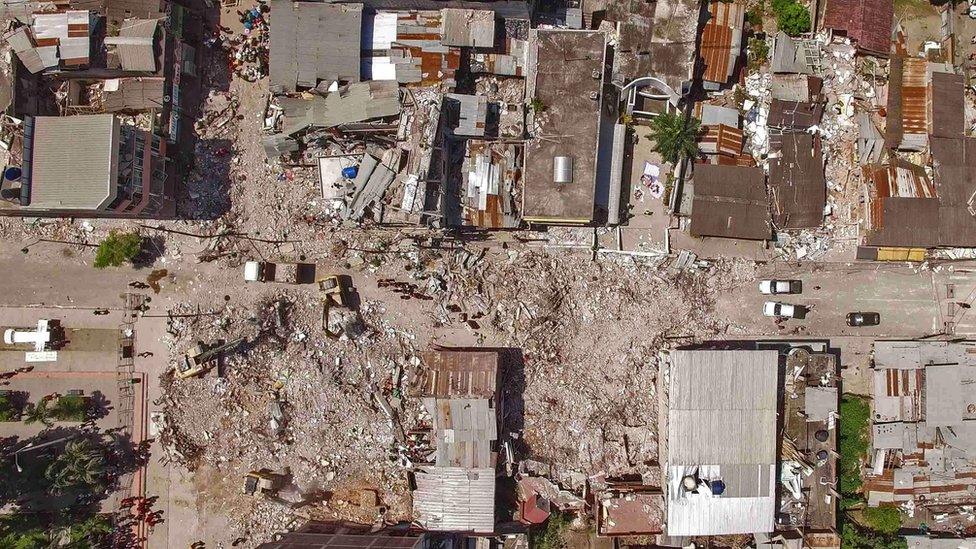
Very few buildings are unaffected in Pedernales
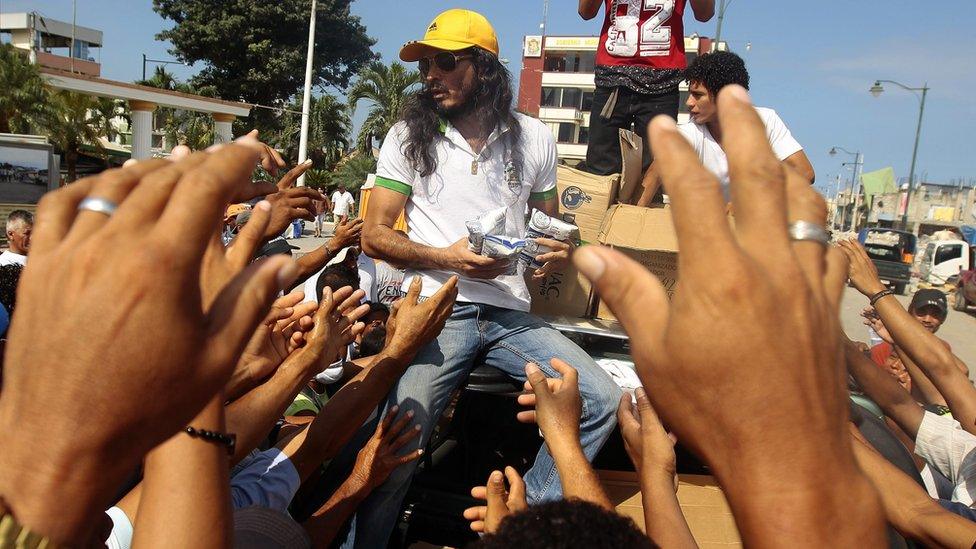
Aid deliveries have reached Pedernales and the worst-hit cities
Just across the street, the diggers are clearing the rubble. Nexar's neighbours have come to watch the clean-up in the hope that they can get access to their homes.
One lady points to a flat-screen television in her third-floor apartment. She wants to rescue it before the thieves do. Apparently the looters have been out in force in recent days.
There are plenty of soldiers and policeman on hand, though. They, together with firemen and rescue workers, are going from house to house speaking to residents to find out who's still missing.
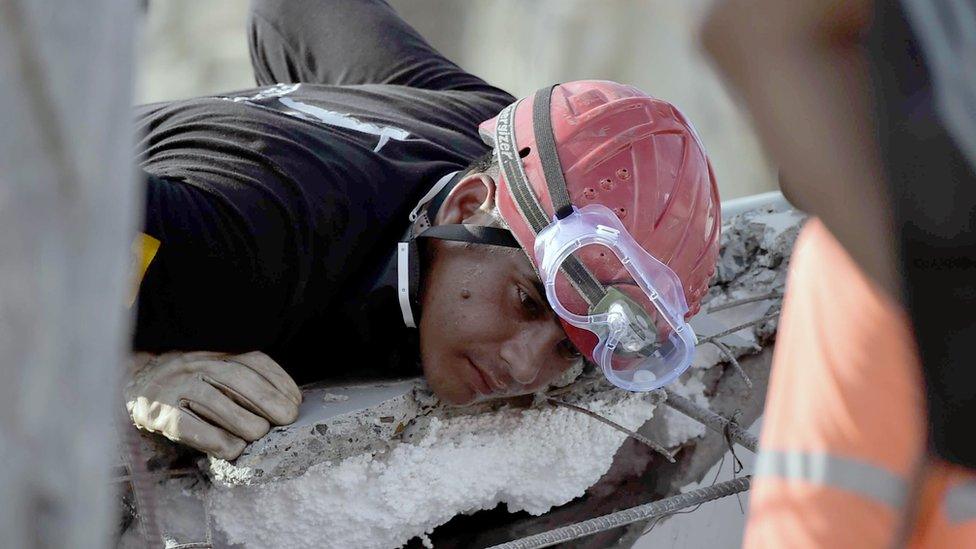
The search for survivors continues in the coastal city
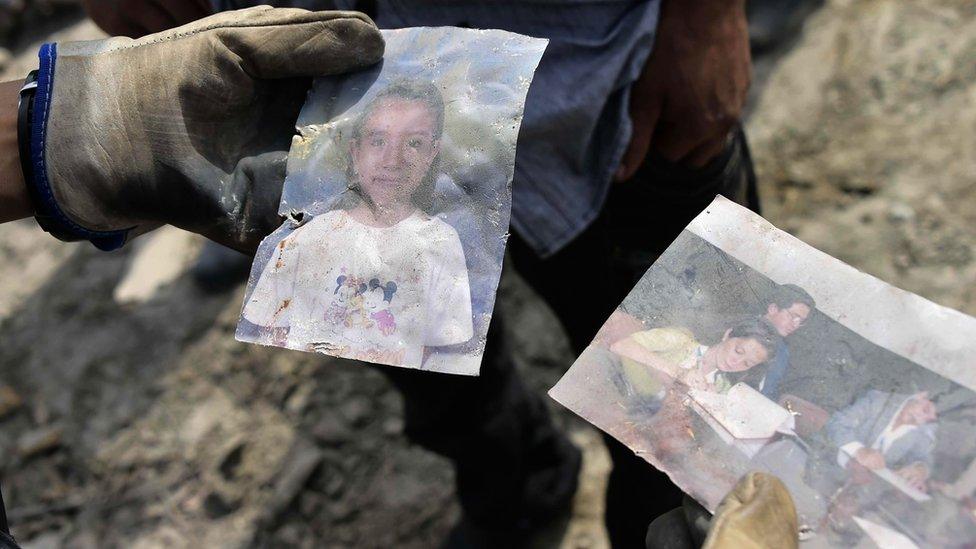
More than 100 people remain missing and some 4,000 injured across Ecuador
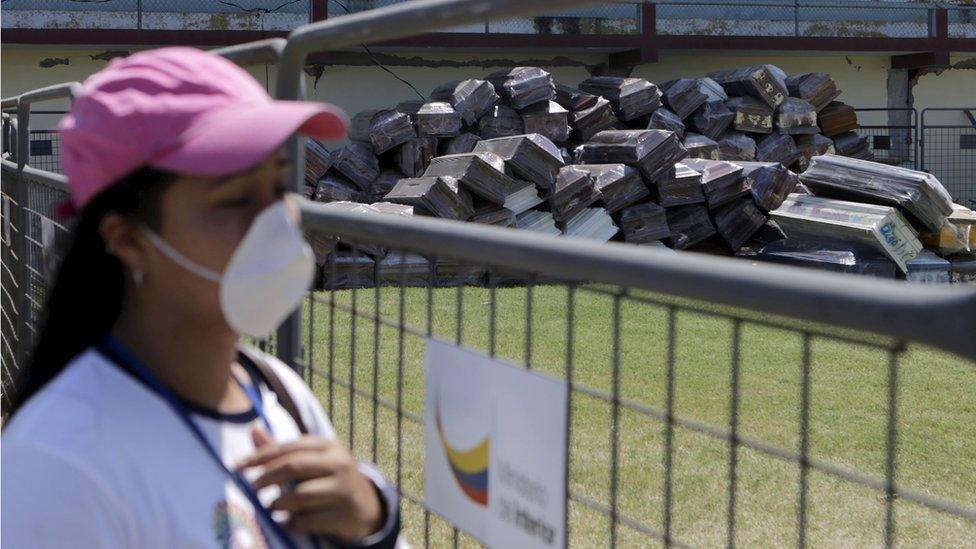
Empty coffins have been stacked at the Maximino Puertas stadium
International search and rescue teams have finally arrived too - the football stadium in Pedernales has been taken over by aid workers.
"As we get access to more remote places, we're going to find more needs, and more people who have died," says Nicolas Verdy of the Canadian Red Cross, who expects the death toll to rise.
In one corner of the stadium is the makeshift morgue under a canopy.
One body has been laid down and a coffin is brought alongside it, ready for the family to take it away.
Along the wall, dozens of empty coffins in plastic wrapping are piled up, on hand for each new body that is brought out from under the rubble.
With no homes to go back to, watching the clean-up is all that most residents can do. Just waiting to see whether anybody else can be found: dead or alive.
- Published17 April 2016
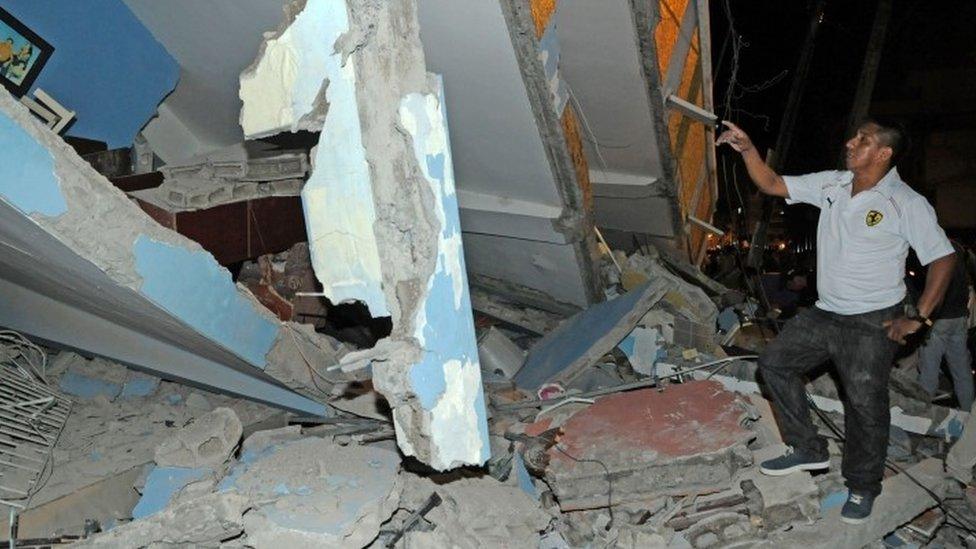
- Published17 April 2016
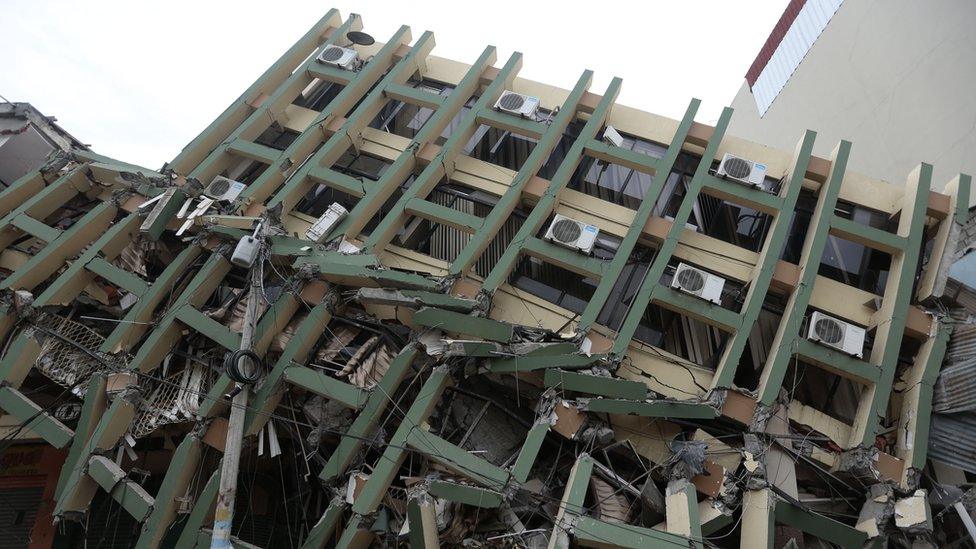
- Published18 April 2016
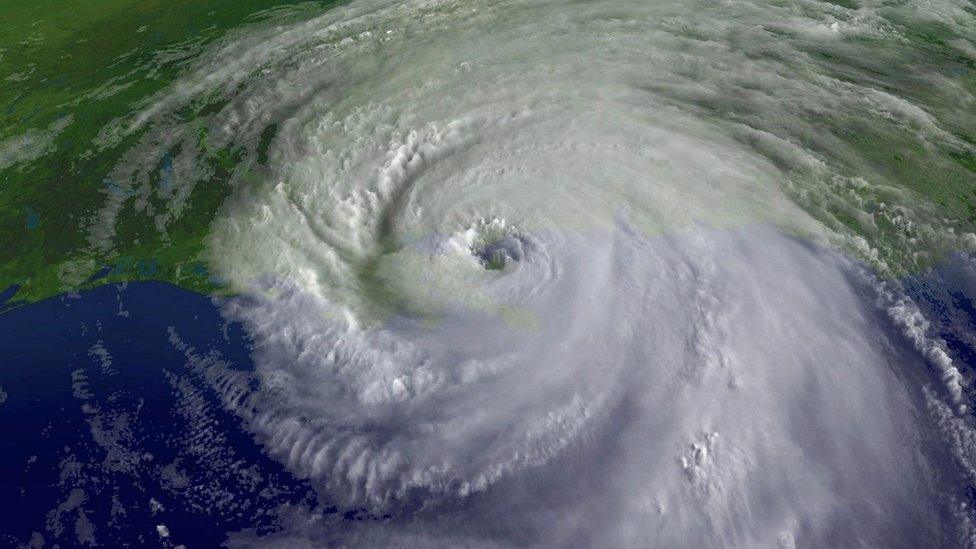
- Published15 January 2024
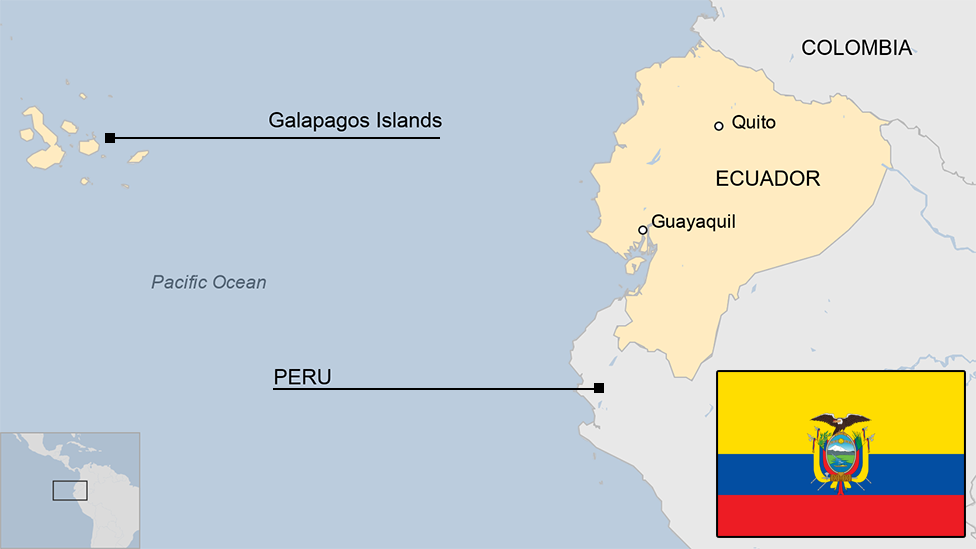
- Published19 April 2016
